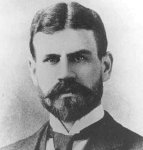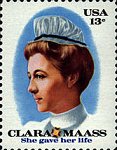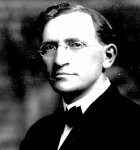VOA慢速:Six Medical Researchers Who Gave All to Their Work; in Some Cases, Even Their Lives
VOICE ONE :
This is SCIENCE IN THE NEWS, in VOA Special English. I'm Bob Doughty.
VOICE TWO:
And I'm Faith Lapidus. This week, the stories of some medical heroes.
(MUSIC)
VOICE ONE:
At the start of the twentieth century, the United States Army had a Yellow Fever Commission. The Army wanted medical experts to study yellow fever and find a way to stop the disease. One team went to Cuba to test the idea that mosquitoes spread yellow fever. The team was led by Walter Reed, the Army doctor and scientist noted for his work on infectious diseases.
In August of nineteen hundred, the researchers began to raise mosquitoes and infect them with the virus. Nine of the Americans let the infected insects bite them. Nothing happened. Then two more let the mosquitoes bite them. Both men developed yellow fever.
VOICE TWO:
 |
| Jesse Lazear |
A doctor named Jesse William Lazear recognized that the mosquitoes that bit the last two men had been older than the others. Doctor Lazear proved that mosquitoes did carry yellow fever.
Doctor Lazear himself was also bitten. No one is sure how it happened. He said it happened accidentally as he treated others. But some people said he placed the mosquito on his arm as part of the experiment. Medical historians say he may have reported the bite as an accident so his family would not be denied money from his life insurance policy.
VOICE ONE:
Jesse Lazear died of yellow fever. His death shocked the others on the team in Cuba. But they continued their work.
More people let themselves be bitten by mosquitoes. Others were injected with blood from victims of yellow fever. Some people in this test group developed the disease, but all recovered to full health.
Members of the team praised the work by Jesse Lazear. They called it a sacrifice to research that led the way to one of the greatest medical discoveries of the century.
VOICE TWO:
The research answered the question of how yellow fever was spread. Now the question was how to protect people. The researchers had a theory. They thought that people who were bitten by infected mosquitoes, but recovered, were protected in the future.
 |
To test this idea, the team in Cuba offered one hundred dollars to anyone who would agree to be bitten by infected mosquitoes. Nineteen people agreed. The only American was Clara Maass. She was a nurse who worked with yellow fever patients in Cuba.
Clara Maass was bitten by infected mosquitoes seven times between March and August of nineteen-oh-one. Only one of the nineteen people developed the disease -- until that August. Then seven people got yellow fever. Clara Maass died six days after she was bitten for the seventh time.
VOICE ONE:
The experiment showed that the bite of an infected mosquito was not a safe way to protect people from yellow fever. Medical historians say the death of Clara Maass also created a public protest over the use of humans in yellow fever research. Such experiments ended.
Cuba and the United States both honored Clara Maass on postage stamps. And today a hospital in her home state of New Jersey is known as Clara Maass Medical Center.
(MUSIC)
VOICE TWO:
 |
| Joseph Goldberger |
Joseph Goldberger was a doctor for the United States Public Health Service. In nineteen twelve, he began to study a skin disease that was killing thousands of people in the South. The disease was pellagra.
Doctor Goldberger traveled to the state of Mississippi where many people suffered from pellagra. He studied the victims and their families. Most of the people were poor. The doctor came to believe that the disease was not infectious, but instead related to diet.
He received permission from the state governor to test this idea at a prison. Prisoners were offered pardons if they took part. One group of prisoners received their usual foods, mostly corn products. A second group ate meat, fresh vegetables and milk.
Members of the first group developed pellagra. The second group did not.













